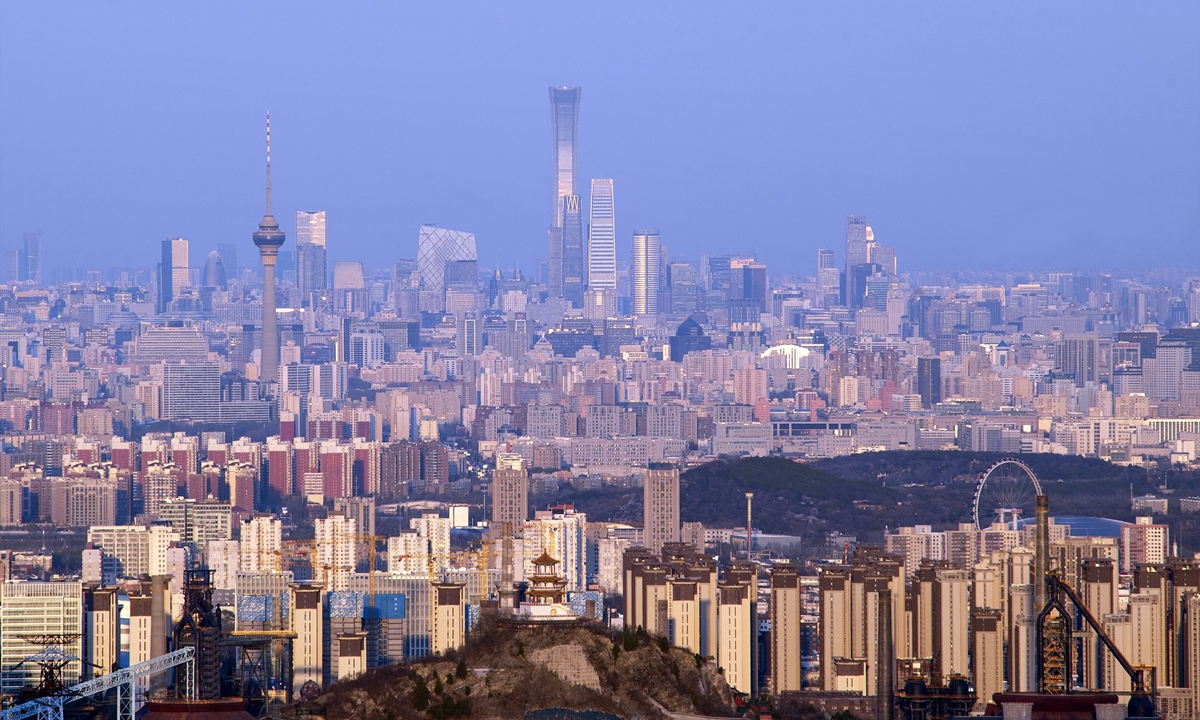
Beijing Photo: VCG
The Chinese economy has started off in an upbeat note, with most provinces across the country showing a stepped-up recovery trajectory in the first quarter of the year — fueled by robust industrial growth, a warm-up in external demand and new drives from the creation of new quality productive forces, relevant data showed.
As the first-quarter data are often deemed as a bellwether gauging the fundamentals of the economy, the solid opening bodes well for the country's whole-year economic development, observers said, while expecting economic heavyweight provinces to continue playing a leading role in buttressing the rebound.
Among the 31 Chinese provinces that have released their GDP growth in the first three months to date, eight provinces and municipalities of East China's Jiangsu, Shandong and Zhejiang provinces, Southwest China's Sichuan Province and Chongqing Municipality, Central China's Hubei Province, Northeast China's Jilin Province as well as Beijing recorded a GDP expansion above 6 percent. Jilin led the provincial GDP growth in the first quarter, with a growth rate of 6.5 percent year-on-year, followed by Jiangsu, at a rate of 6.2 percent.
China's eastern and southern regions, or economic heavyweight provinces, continue to play a pivotal role in driving the economy. The economic outputs of South China's Guangdong and East China's Jiangsu, dubbed as the country's manufacturing hubs, have hit over 3 trillion yuan ($414 billion) in the first quarter, while that of Shandong and Zhejiang exceeded 2 trillion yuan.
All these major economic provinces have shown a good momentum in the growth of high-tech manufacturing and new quality productive forces. For example, investment in advanced manufacturing and high-tech manufacturing in Guangdong rose by 22.4 percent and 33.3 percent, respectively. In Jiangsu, the value of high-tech industries output accounted for 50.2 percent of the industrial output, reaching 50 percent for the first time.
Observers said major economic provinces usually have a solid economic foundation, well-developed industrial chains, and strong economic power, thus they are playing significant roles in economic growth. As there are still many uncertainties that could weigh on the GDP growth for the whole year, these provinces, with greater economic resilience, should further give full play to their "pillar" and "stabilizer" roles looking ahead.
Analysts also suggested that major economic provinces can strengthen cooperation with surrounding areas to achieve resource sharing and complement each other's advantages, so as to jointly promote regional economic development.
A total of 17 provinces have reported a GDP gain either in line or surpass the national average of 5.3 percent, news website guancha.cn reported on Friday.
It is worth noting that most of China's central and western provinces have been in a catch-up to close development gaps with the eastern regions. In Chongqing, the manufacturing industries for electronic specialty materials and intelligent unmanned aerial vehicles both saw an added-value increase of over 80 percent, relevant data showed.
However, data from different provinces also underscored an imbalance in economic recovery, in particular a lag in consumption rebound, observers pointed out. They expect the sector to pick up expansion in the second quarter, especially with the launch of more supportive measures such as trade-in plans.




